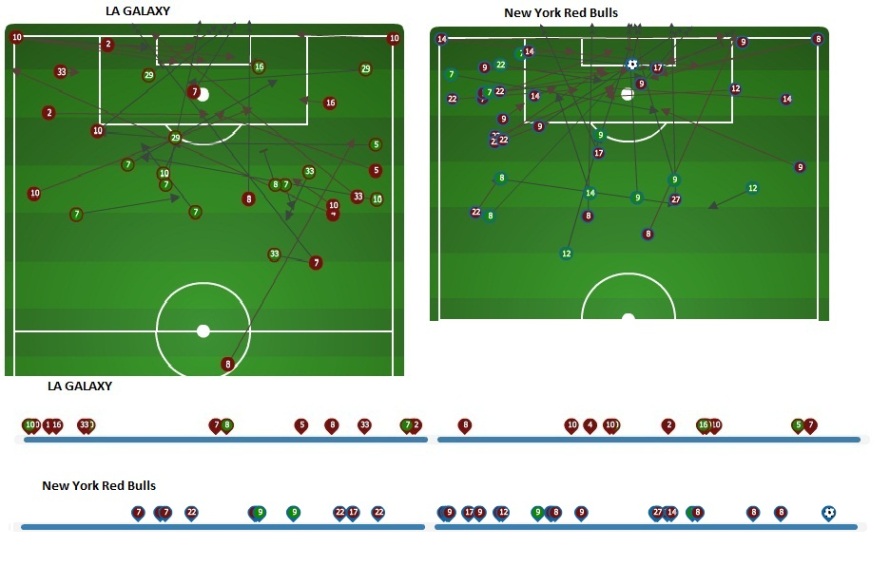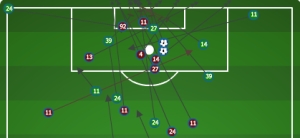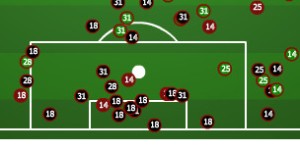Game of the Week: (A Rather Late) #LAGvsNYRB Review
/We've talked quite a bit about game states on the blog over the last few weeks, both linking certain articles as well as talking about it on the podcast. The ability to take specific events and associate context with them to provide a better understanding of the match results is helpful. However, there are times when I think Game States need to be refined based upon the situation. Take for instance our "game of the week" selection, New York Red Bulls at home against the potent Los Angeles Galaxy. There is a lot I could say about leaving Mike Magee behind in LA and losing Juninho just 10 minutes into the match. Attempting to use the typical goal game state doesn't really work simply because of the lone goal was scored at the 91 minute mark.
If we were looking at this in a season long context and we wanted to see how good a team was in the "even goal state," or maybe how long they played in an even goal state, 90+ minutes of data this match would go towards that game state and presumably help speak to each team's ability. The problem is that on an individual game basis sometimes there is a need for another way to really apply context to this game.
Naturally, with the injury to Juninho the first thought is to apply game states to substitutions rather than goals. The problem with that---omitting Juninho's substitution---is that substitutions take place in bunches in the second at the end of the game. It's becomes difficult to separate where exactly there was a specific difference maker.
So I kind of abandoned the thought of single game states in this scenario and instead looked more for another pattern.
Above is a bit from the MLS site chalkboard. Events on the timeline have been taken from each team, and each has a corresponding event associated with it on the map of the pitch. I specifically used offensive-associated filters to help give me an idea of the effectiveness of each team and how often it was involved.
The specific filters used were: Through balls, Crosses (both successful and unsuccessful), Key Passes, Shots on target, shots off target and lastly, blocked shots. These are all decisively aggressive methods that appreciate a teams ability to drive towards the opposing goal. I'm not exactly sure what to make of all it, there are almost distinctive time blocks that belong to each team as they would hold the ball and look for their own attempts on goal.
You can see that each team had a couple of chances in the last 10 minutes and it came down to a bit of luck in the circumstances of the lone goal. The timeline itself looks almost like heart beat rhythm between each team and their respective attempts towards the opposing goal. This is kind of the pattern I was looking to find, but I don't exactly know what to do with it.
In summation of the actual game, you could make some Carlos Cudicini references---see: Matthew Doyle for snark---and put a nice little bow on it. Yes, I do agree that LA's Italian keeper should have come out of his goal to clear the attempt, but I happen to also think that this single game came down to a rather random occurrence. A simple mistake from a goal keeper who has been in residence at some prestigious clubs.
The league average team finishes a shot roughly once every 10 attempts. The New York Red Bulls scored on what was their 10th attempt at goal. While LA was stuck at 9. I know it's not popular but I believe that sometimes it's not necessarily about strategy or anything deep tactically. Instead, maybe it's about fighting for 90 minutes, putting up as many (good) shots as possible and hoping one of them goes in. That sounds a bit Charles Reepish... I know, but sometimes it's true. Sometimes the ball just finds its way into the back of the net.
Humans make mistakes and even the best goal keepers do, too.






